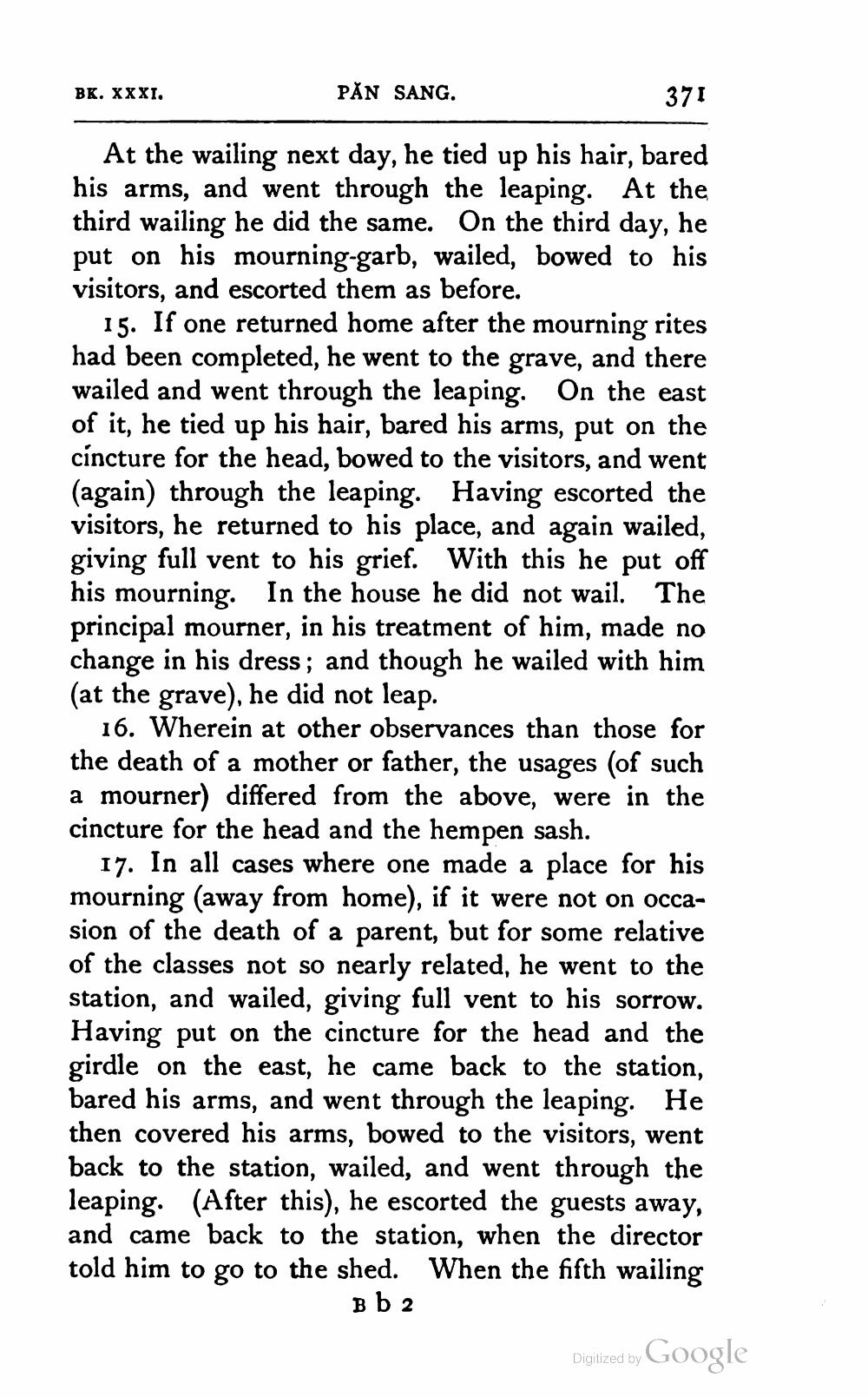________________
BK. XXXI.
PẦN SANG.
371
At the wailing next day, he tied up his hair, bared his arms, and went through the leaping. At the third wailing he did the same. On the third day, he put on his mourning-garb, wailed, bowed to his visitors, and escorted them as before.
15. If one returned home after the mourning rites had been completed, he went to the grave, and there wailed and went through the leaping. On the east of it, he tied up his hair, bared his arms, put on the cíncture for the head, bowed to the visitors, and went (again) through the leaping. Having escorted the visitors, he returned to his place, and again wailed, giving full vent to his grief. With this he put off his mourning. In the house he did not wail. The principal mourner, in his treatment of him, made no change in his dress; and though he wailed with him (at the grave), he did not leap.
16. Wherein at other observances than those for the death of a mother or father, the usages (of such a mourner) differed from the above, were in the cincture for the head and the hempen sash.
17. In all cases where one made a place for his mourning (away from home), if it were not on occasion of the death of a parent, but for some relative of the classes not so nearly related, he went to the station, and wailed, giving full vent to his sorrow. Having put on the cincture for the head and the girdle on the east, he came back to the station, bared his arms, and went through the leaping. He then covered his arms, bowed to the visitors, went back to the station, wailed, and went through the leaping. (After this), he escorted the guests away, and came back to the station, when the director told him to go to the shed. When the fifth wailing
B b 2
Digitized by Google




